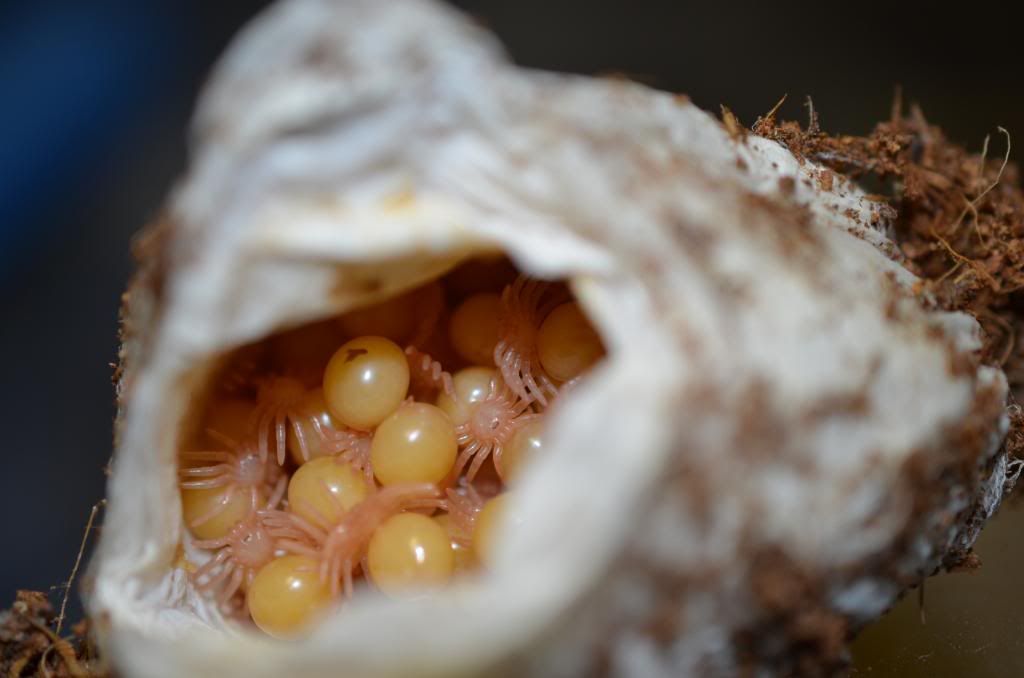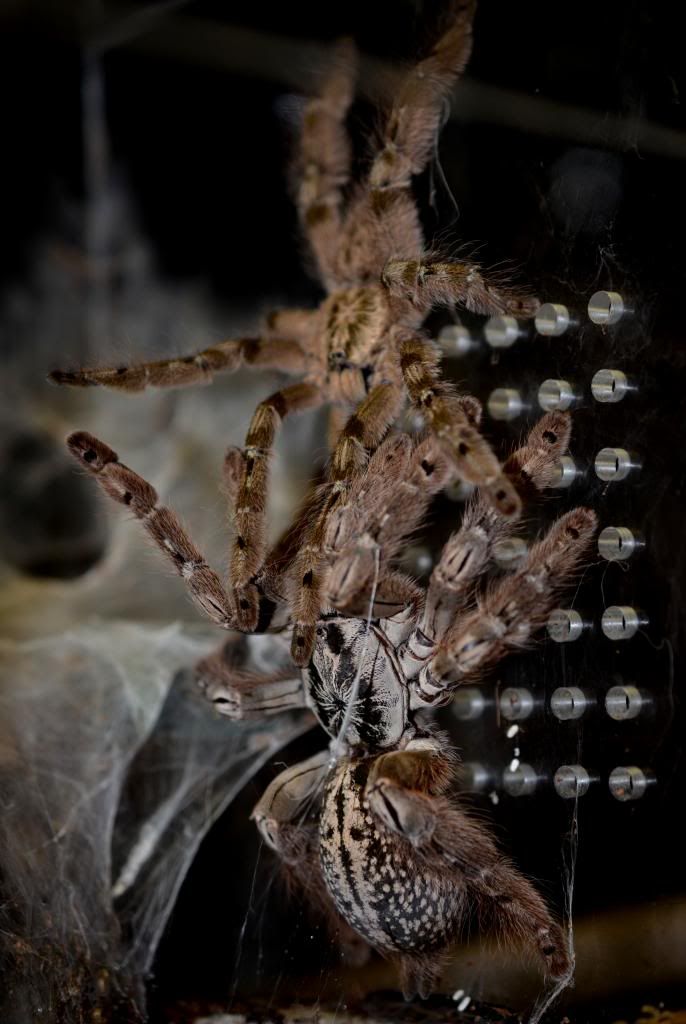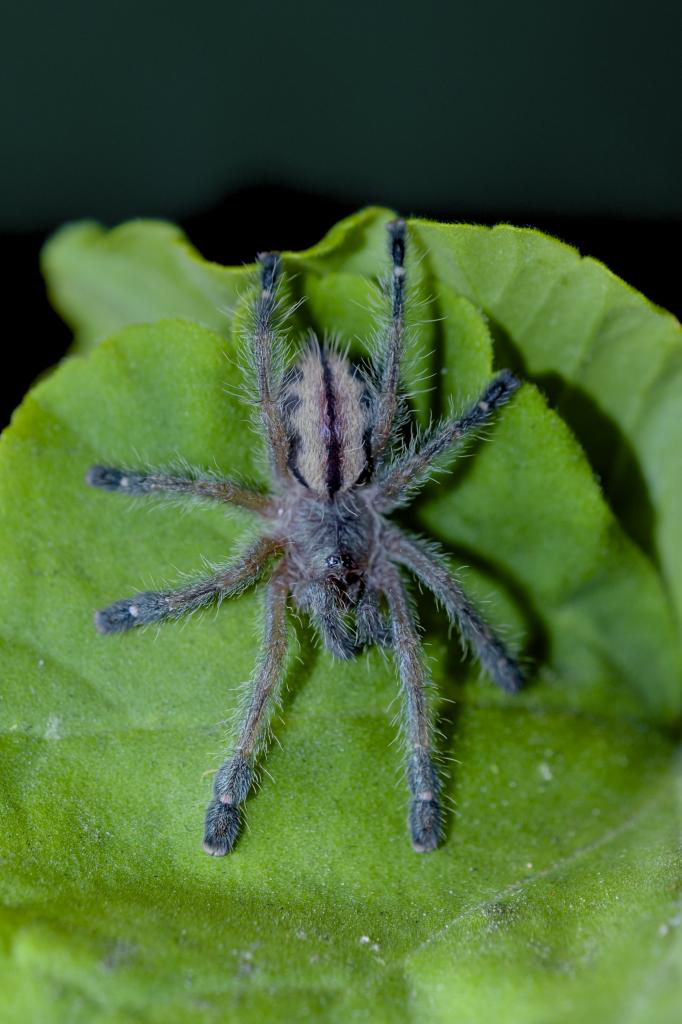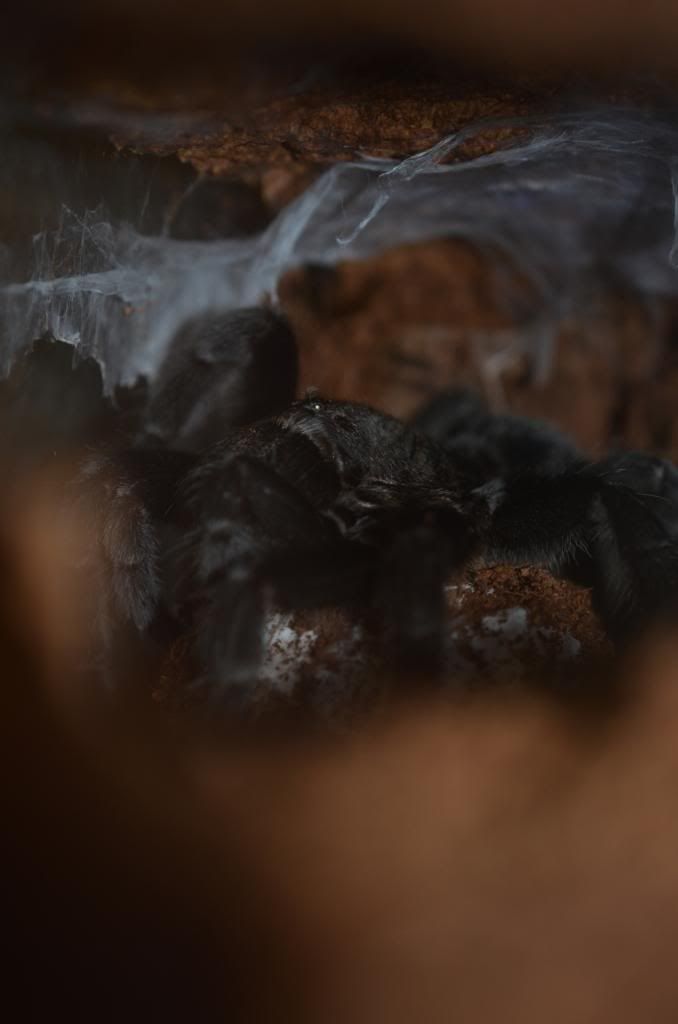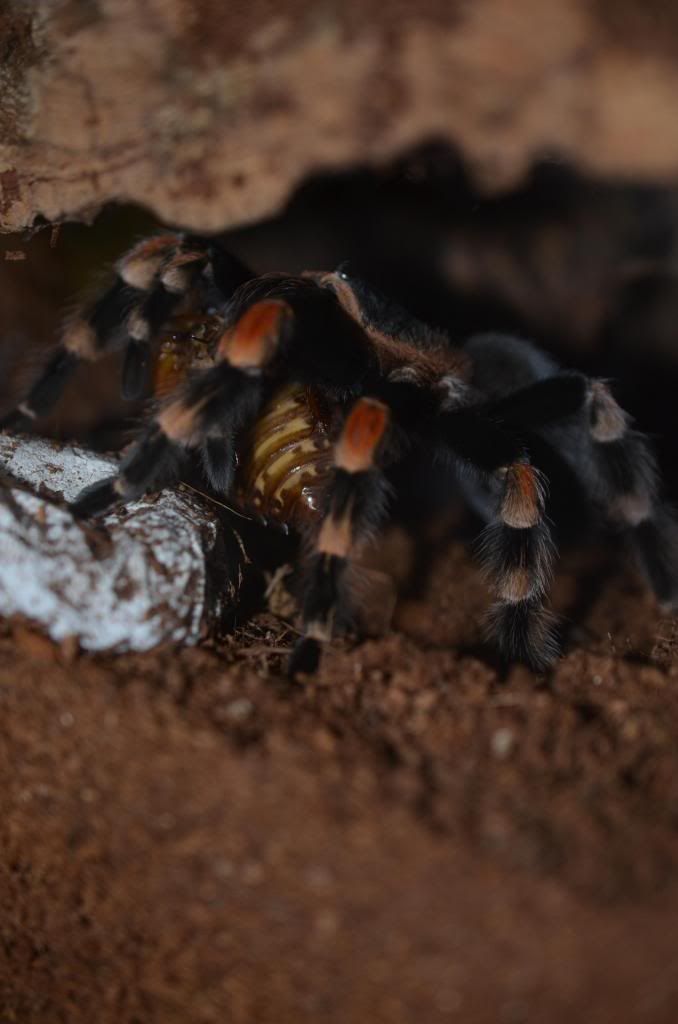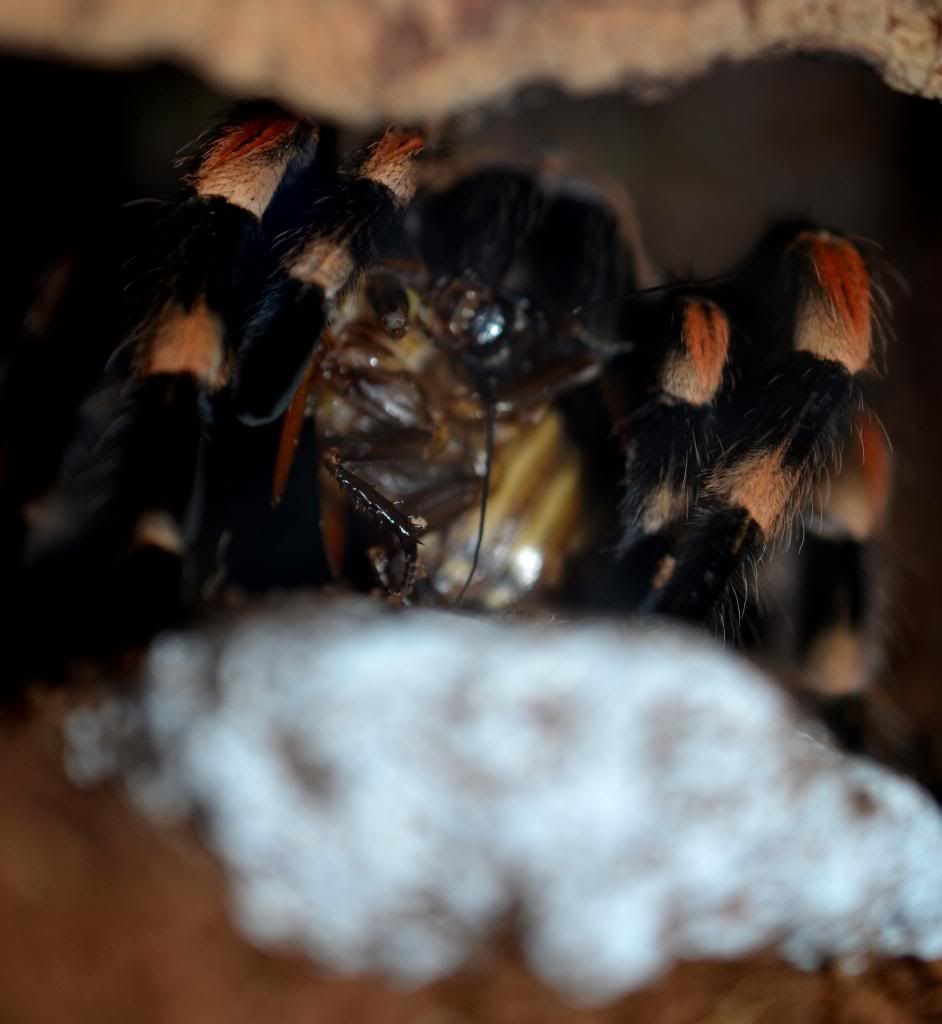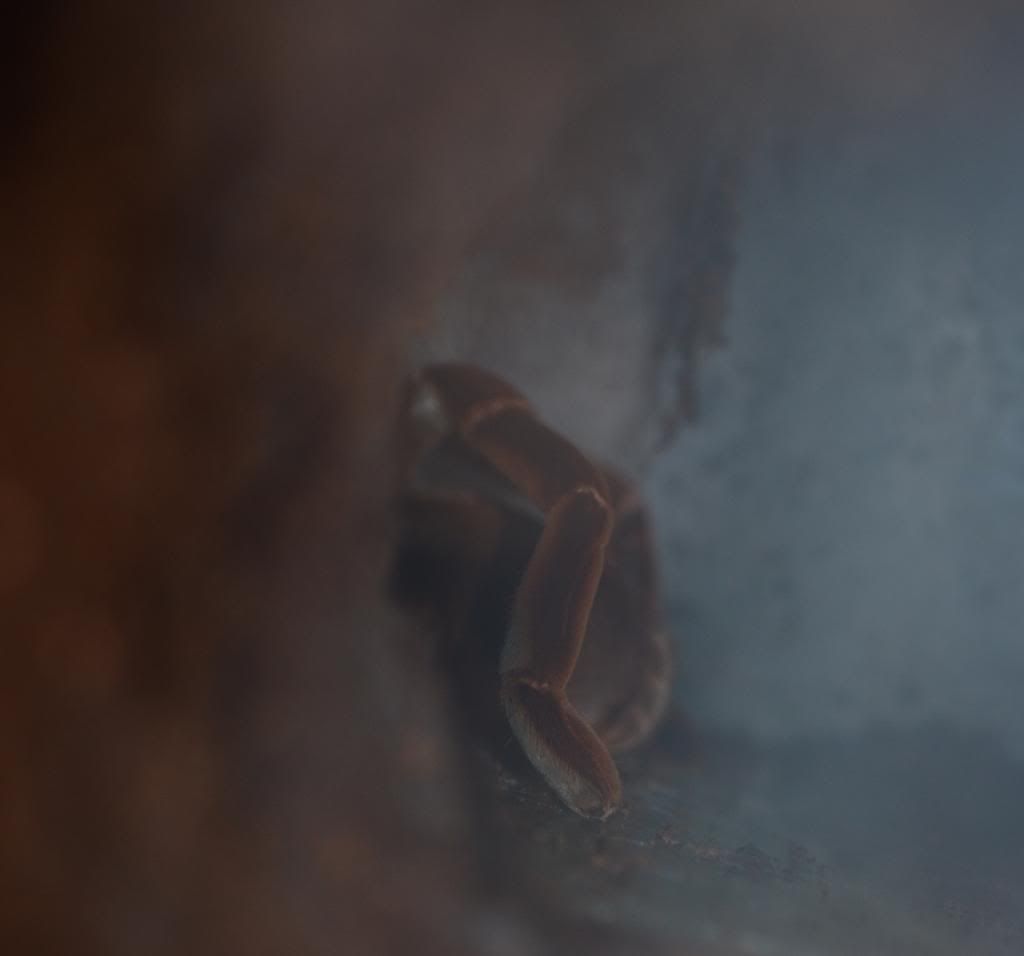A question I am often asked is, “Jamie, why take the time to feed roaches fresh fruits and vegetables? After all, they are only going to be eaten by my tarantula.” The answer is simple. Similar to how we feel healthier when we eat well; the roaches will also experience health benefits- which translates to healthier tarantulas! There are a number of reasons the tarantula(s) should be fed these particular roaches:
1) The tarantula(s) can reach its full genetic size (remember, as mom would say: eat your greens to grow big and strong).
2) Undernourished tarantulas lack the vibrancy/coloring that their well-nourished counterparts exhibit.
3) It’s possible to increase growth rate, while decreasing the amount of food that the tarantula is fed. This is also why pet stores sell higher quality dog/cat food in smaller portions (the higher the quality, the smaller the portion sizes needed to ensure proper nutrition).
4) Improvement in overall health. If you were to eat only junk food every day, you would most likely feel rather lethargic, stressed, or just plain blah! Same goes for tarantulas. A tarantula that eats organically fed roaches will be less stressed!
5) Increased hydration. A well hydrated tarantula is more likely to have a successful molt. Tarantulas that are not adequately hydrated can die during a molt.
Another question that I am frequently asked is, “Jamie, how do I ensure that my tarantula is receiving sufficient hydration?” That is a wonderful question. Oftentimes, people feed roaches to their tarantulas without forethought as to whether or not the roach itself is hydrated. One method of safeguarding against dehydration is to “gut load” your roaches prior to feeding them to your tarantula. Gut loading is merely feeding your roaches fresh fruit and vegetables ( versus roach chow alone) in order to maximize their water intake. I strongly believe that hydration is more important than relative humidity in the enclosure for a successful molt.
Above: Dubia roaches eating organic apple and organic cooked winter squash. They love it!
“But why buy organic?” Organic, or pesticide-free food is the highest quality food that you can provide your roaches. Pesticides are designed for one purpose: to kill bugs. Due to the process of bioaccumulation, pesticides will concentrate as they move up the food chain. What does that mean? Bioaccumulation and biomagnification are two processes that allow for the spreading of toxins from the environment to the first animal that consumes the toxins (bioaccumulation), or the concentration of toxins spread from one link in the food chain to another (biomagnification). “Ok, so how does that affect my tarantula if my roaches don’t seem to be bothered by any of the regularly grown food?” Your roaches may not become ill and/or die after consuming pesticide laden produce. However, once the roaches have ingested said pesticides, they will transmit the toxins directly to your tarantula; thus increasing the likelihood of an early death for your pet. I believe that DKS (Dyskinetic Syndrome) may be related to the usage of pesticide laden food. If organic food is not available in your area, an easy solution is to wash the produce with baking soda and vinegar, and remove the outer layer of the food item (if possible). There are also produce washes available in most grocery stores. Remember, pesticide residue will always be retained in non-organic produce. Additionally, it is important to avoid feeding your roaches non-organic lettuce (find a substitute).
Due to the extensive size of our roach colonies; they are fed the “leftovers” in conjunction with organically grown produce - as my cooking scraps are insufficient to keep up with our roaches appetites. I doubt that my customers will experience a shortage of scraps to feed their roaches. When preparing your own food, you can easily save money on roach feed by feeding them the trimmings from lettuce, broccoli, carrots, cucumbers, and so on. Your roaches will love you for it, and in turn, so will your tarantula(s). Rather than spending the money to purchase our “complete dubia chow” (which accounts for 5-25% of our own colony’s feed), spend a little extra to purchase organic produce. It’s better for you, your roaches, your tarantula(s), and Earth.
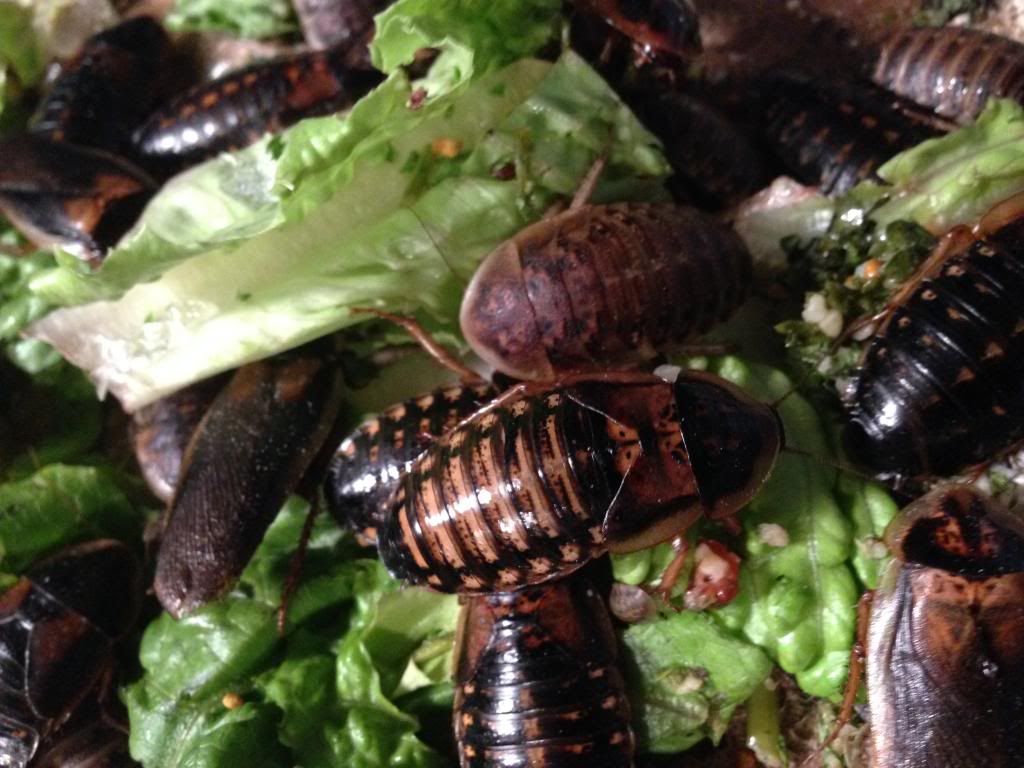 Above: Dubia roaches eating a mix of organic lettuce, bee pollen, olive oil, and yesterdays organic tabbouleh salad
Above: Dubia roaches eating a mix of organic lettuce, bee pollen, olive oil, and yesterdays organic tabbouleh salad
Roach care and breeding:
Many roach species, including the ever-popular B. dubia (Guinea orange spot roach), will only breed in warm conditions. For dubia, the temperature needs to be above 68 degrees fahrenheit, or they will not reproduce. Though it may seem like a hassle - it is actually a blessing in disguise; as temperature variations can be used to control the population of your colony. Decreased temperatures in the overall environment can be easily overcome through the use of heat pads, or supplemental heating, if continued breeding is desired.
B. dubia need relatively high humidity in order to breed and molt properly. It is imperative to keep the egg crate(s) dry; otherwise you are inviting mold, mildew, and mites to move in with your roaches! A problem that arises when you begin breeding your own roaches is, “how do you prevent an active colony of roaches from smelling?” A solution to this potential issue is to use lesser mealworms. These nifty little bugs will consume molts, deceased dubia, and other organic matter that would otherwise produce odor. Furthermore, lesser mealworms are harmless to live dubia. We include lesser mealworms with every purchase of a starter colony. Also, we provide these critters for free with the purchase of roaches when asked. If you would like us to include lesser mealworms with your regular dubia order, please indicate so in the notes upon check-out. Keep in mind: A healthy colony is one that you can’t smell!
Lastly, I have periodically been asked how I feel about the use of Pet-Store crickets for the purpose of feeding a tarantula. Pet-Store crickets are designed to feed reptiles. Reptiles, unlike tarantulas, need large amounts of calcium. It is widely known that the crickets from pet stores are oftentimes dusted with even more calcium prior to being sold. If crickets are your only feeding option, I would suggest obtaining a “kritter keeper” (basically a housing unit for your crickets). You can begin feeding the newly purchased crickets fresh organic produce, such as: lettuce, broccoli, apples, bananas, oranges, etc., for a minimum of 24 hours prior to feeding your tarantula.








